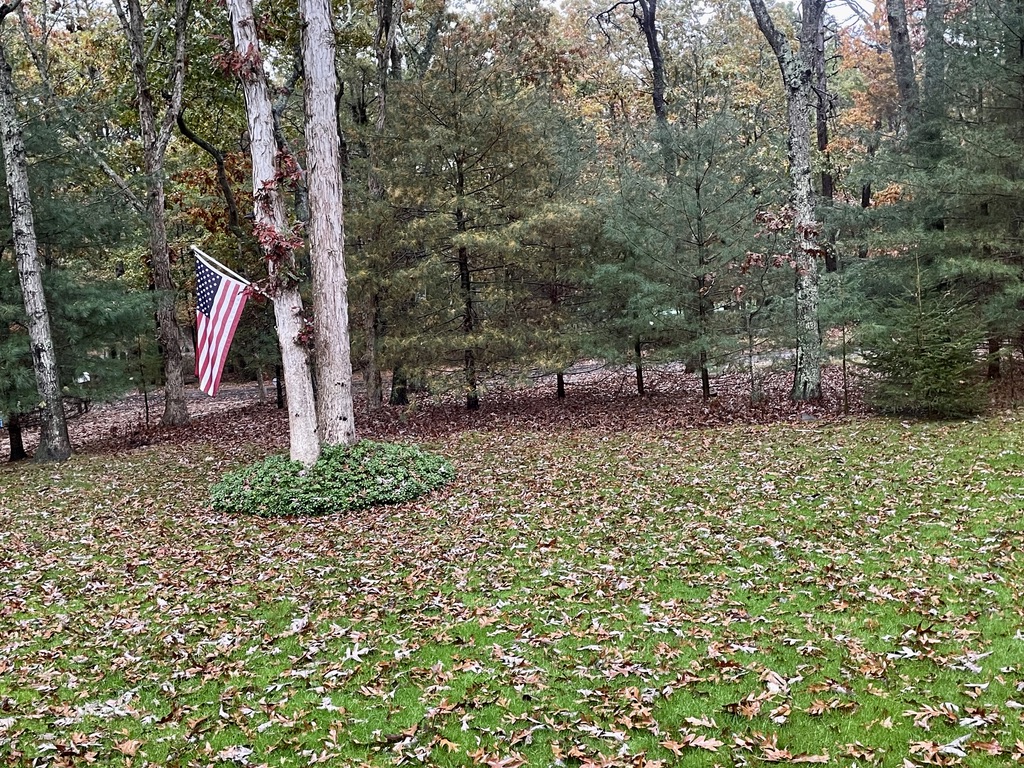Every Fall we rake our leaves away to reveal the green lawn we’ve pampered during the Spring and Summer seasons- all the fallen leaves of yellow, orange, and brown are actually not “dead” leaves, but filled with organic nutrients that return to the soil making it a rich organic fertilizer! Local landscapers are reporting more homeowners are opting out of blowing leaves off their properties – and that’s a positive move in the right direction for the environment in a multitude of ways.

“Leaves form a natural mulch that helps suppress weeds and fertilizes the soil as it breaks down. Why spend money on mulch and fertilizer when you can make your own? Turning leaves into solid waste is, well, wasteful,” said National Wildlife Federation Naturalist David Mizejewski. “Removing leaves also eliminates vital wildlife habitat. Critters ranging from turtles and toads to songbirds, mammals and invertebrates rely on leaf litter for food, shelter and nesting material. Many moth and butterfly caterpillars overwinter in fallen leaves before emerging in spring. Also, sending organic matter such as leaves to the landfill causes the release of greenhouse gases that contribute to climate change. Best of all, the less time you spend removing leaves, the more time you’ll have to enjoy the gorgeous fall weather and the wildlife that visits your garden.”
For more information click on the banner below.
What lies beneath?
“When leaves fall from a tree, the plant material covers the tree’s root zone and begins to break down, returning nutrients to the soil. Think of it as organic mulch or fertilizer, said David Mizejewski, a naturalist with the National Wildlife Federation, which has designated October as Leave the Leaves Month.”
“Within that fallen leaf layer is an entire ecosystem, Mr. Mizejewski said, home to all sorts of animals, including invertebrates, reptiles, amphibians and pollinators. Many species of moths and butterflies, for instance, rely on the leaf layer to complete their life cycle, Mr. Mizejewski said, as more than 90 percent of moth species attach themselves to leaves and spend the winter in cocoons buried among the foliage. Those moths and butterflies, in turn, are a critical food supply for many birds.”
For more information click on the banner below:
Popular posts:
- 10 Things Nobody Tells You About Fiddle-Leaf Fig Trees
- Invasivore: Mugwort the Herb vs. Mugwort the Weed
- Hardscaping 101: Ground Covers to Plant Between Pavers
- Hardscaping 101: Decomposed Granite
- Fall Gardening 101: Autumn Can Be an Ideal Time to…
“Landscape designer Edwina von Gal is on a mission to change the way we think about our yards. Trying to stop what she calls the “noise and poison” cycle of chemical fertilizers, pesticides (about one billion pounds used annually in the U.S.!), and gas-powered mowers and blowers that has plagued the landscape industry for decades, she founded the Perfect Earth Project in 2013 to “promote toxic-free lawns and landscapes for the health of people, their pets, and the planet.” These landscapes are not only clean and safe, but also beautiful and inviting: lush with native plants and alive with pollinators and birds.”

“Advice from our local landscape architect, Edwina von Gal, is a leader in protecting our natural resources through her landscape designs, and is the founder of Perfect Earth Project, a non-profit organization dedicated to educating, engaging, and inspiring individuals, land care professionals, and decision-makers to adopt toxic-free, nature-based, and climate-responsible landscaping practices necessary for a healthier, more sustainable—and beautiful—environment for all.”
Q: What should I do with leaves?
Edwina: “We try to maintain a population of leaves that remains relatively undisturbed, to protect insect life. But I’ll remove some from my driveway and make piles of them to layer into my compost, chopping some up with the mulching mower since they break down much faster when they’re shredded. I’ll also rake leaves into shrub beds to preserve the insects in larval or egg form that are living on them. But in most places, I simply leave the leaves where they are.”
To learn more, visit perfectearthproject.org and download the free how-to guide on nature-based landscapes.
For more on healthy lawns, see:
- Fields of Green: 5 Favorite Lawn Substitutes
- Ask The Expert: How to Plant a Meadow Garden, with James Hitchmough
- 10 Easy Pieces: Reel Lawn Mowers
- Trend Alert: Mowing the Lawn With a Scythe
Q: What should a homeowner do right now for their lawns?
“First and foremost, stop using any chemical pesticides and fertilizers. Lawns treated with them are toxic to us, our kids, grandchildren, pets, and the planet. Don’t be afraid to let your landscape breathe!”
For more information, click on the link below for the entire article by Melissa Ozawa.